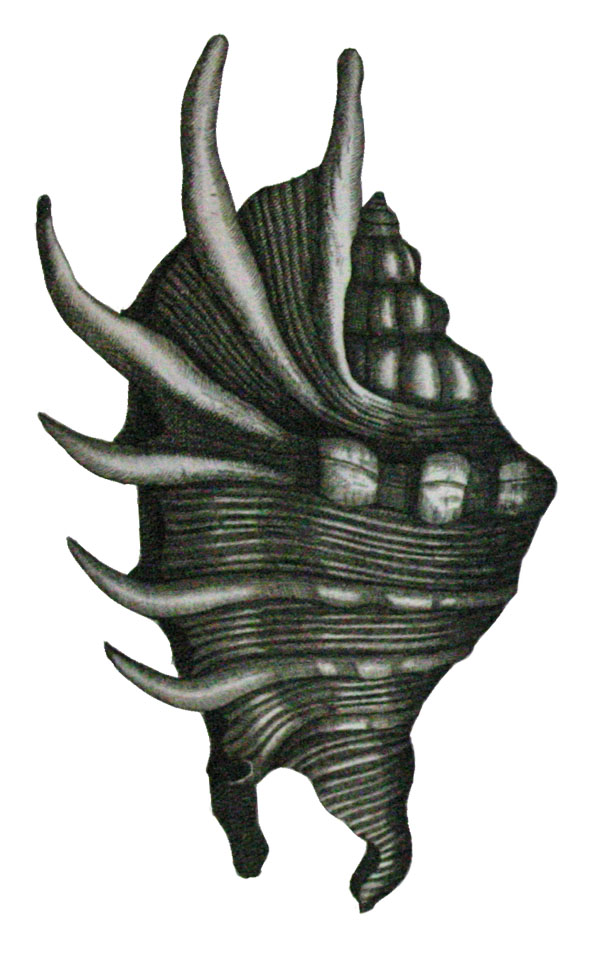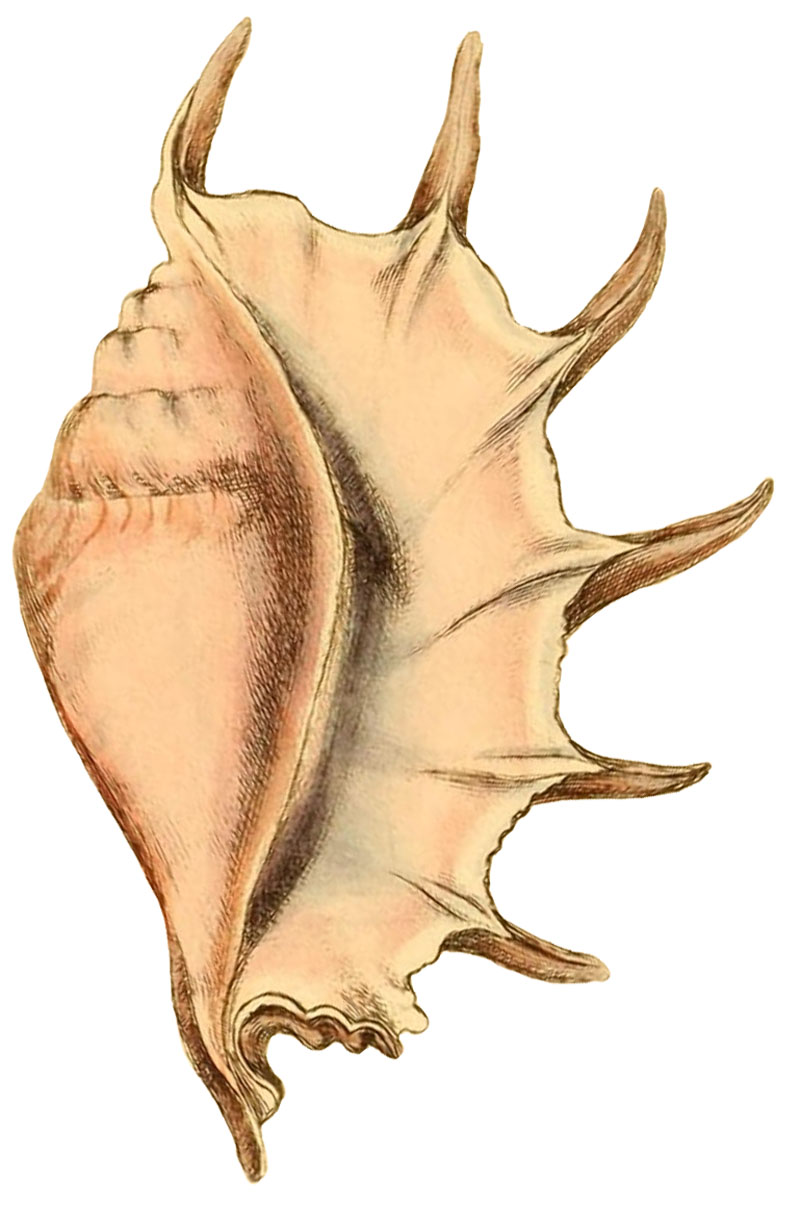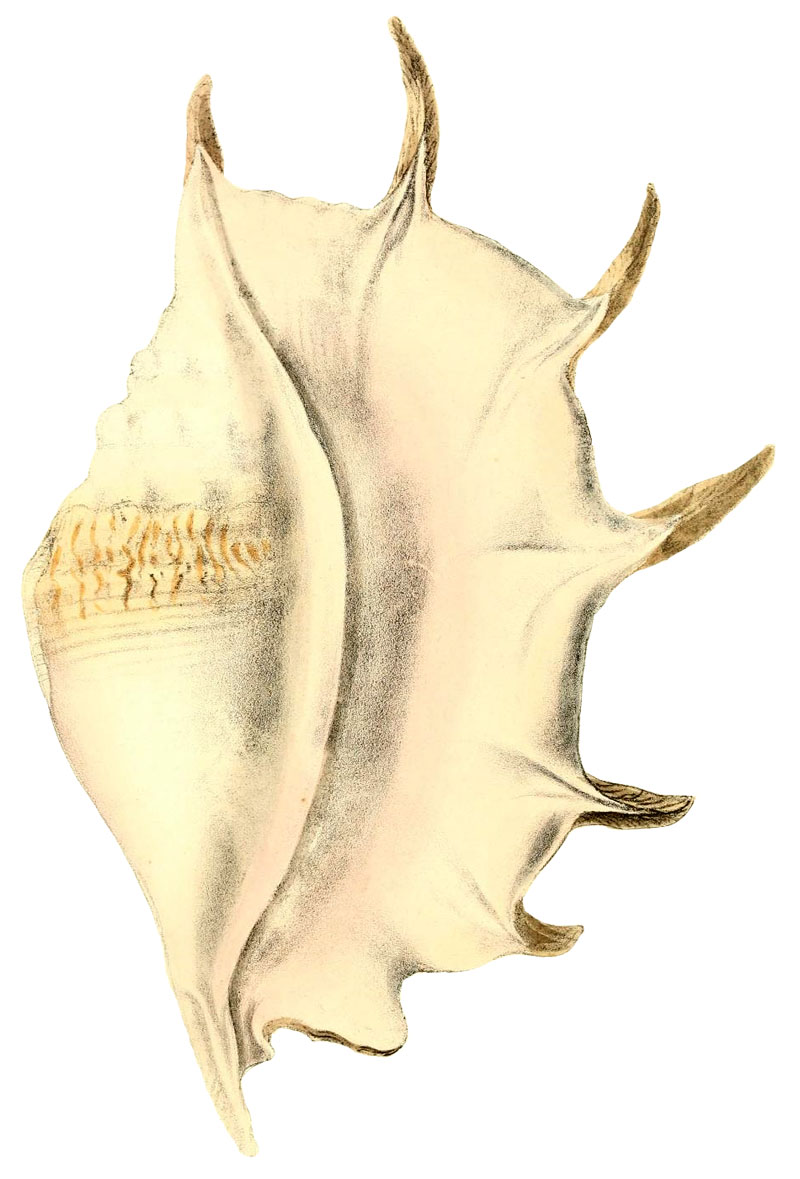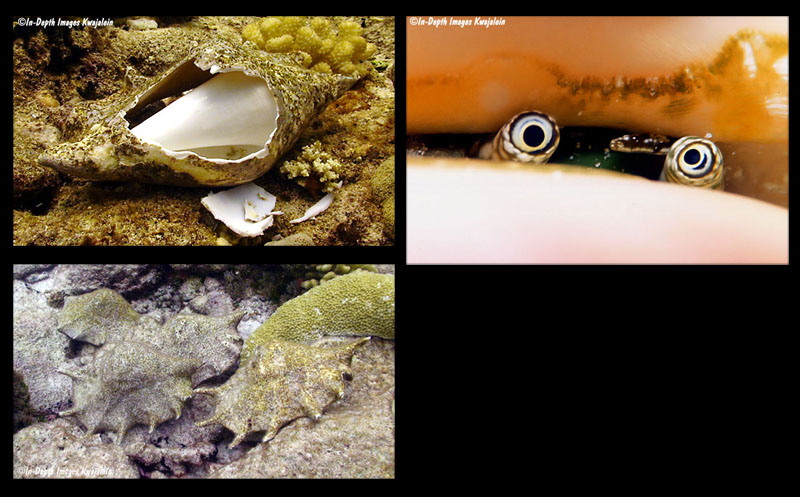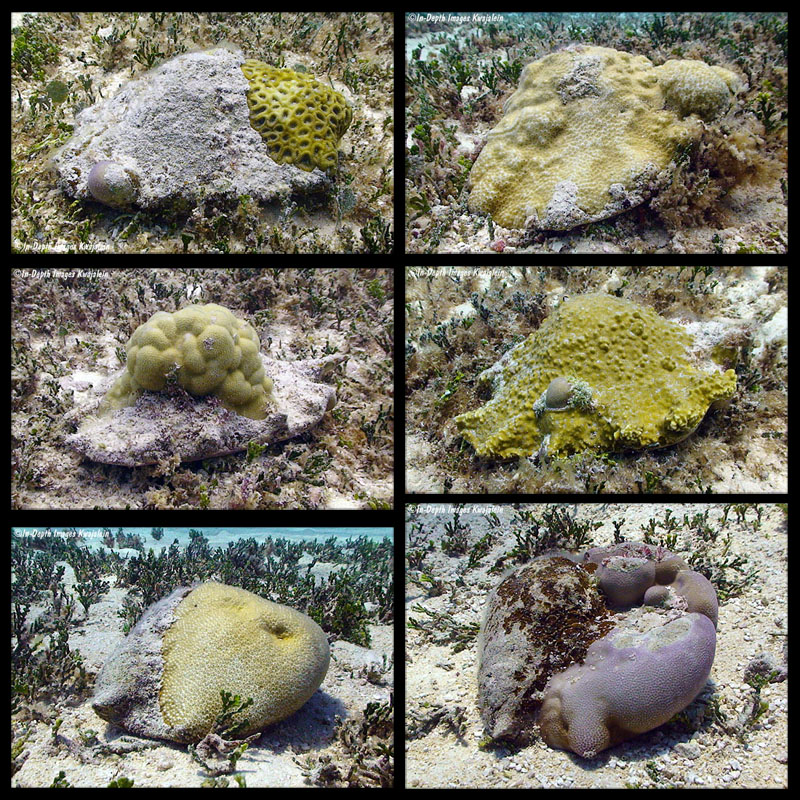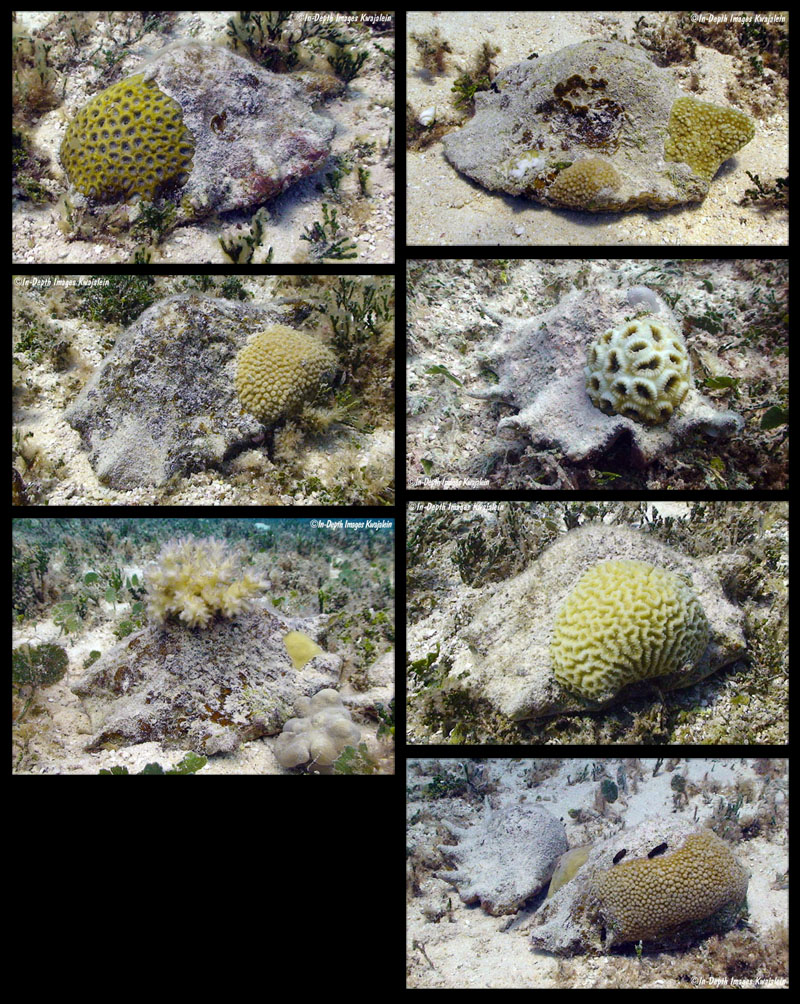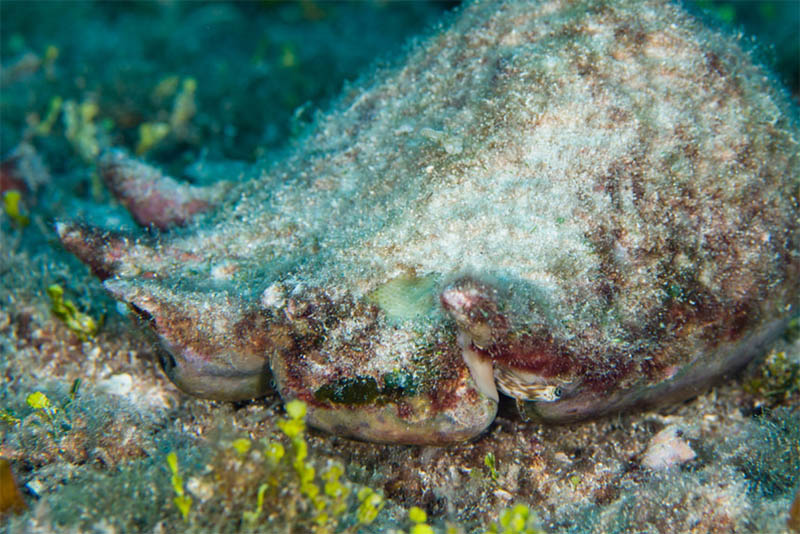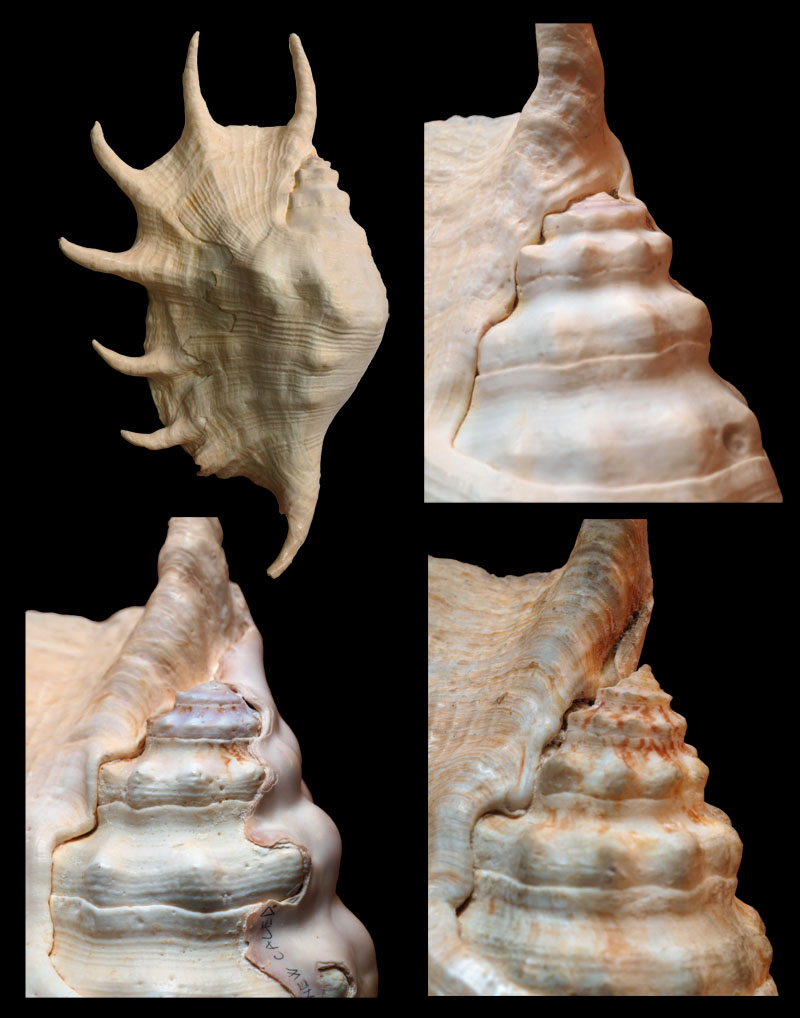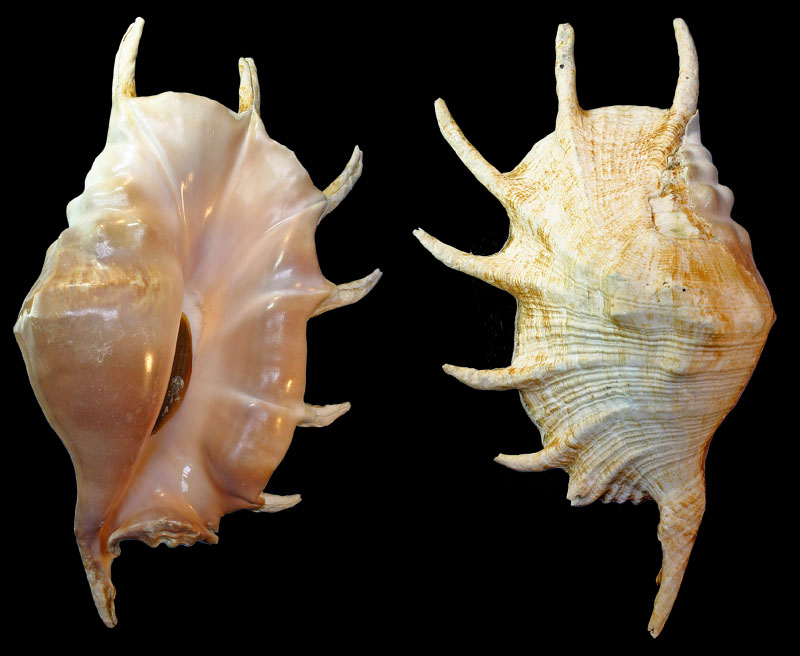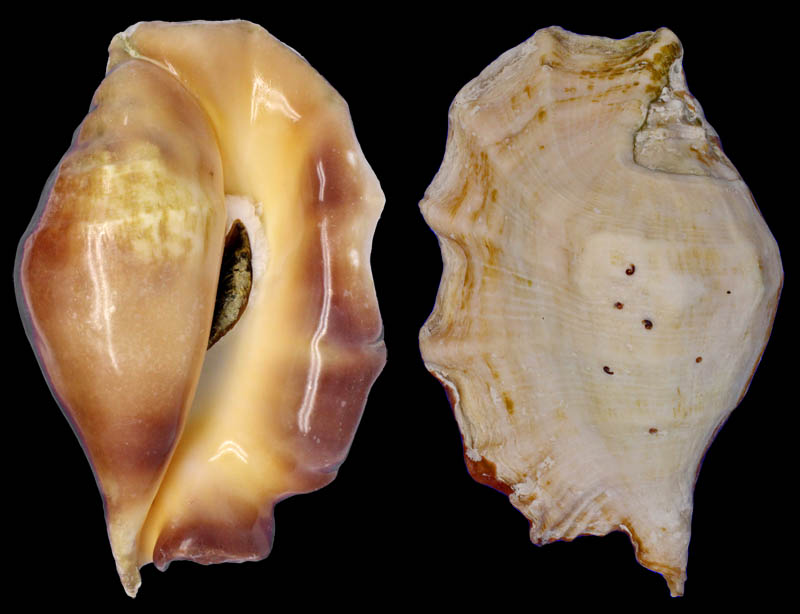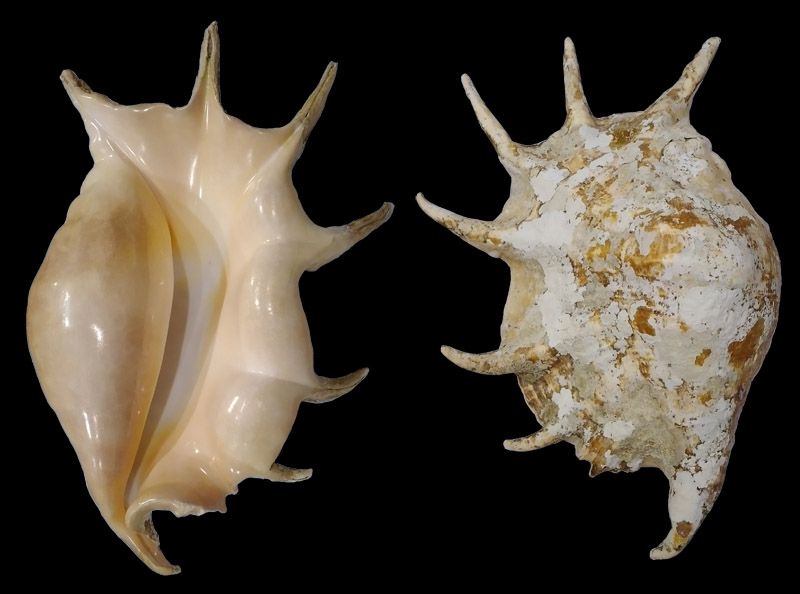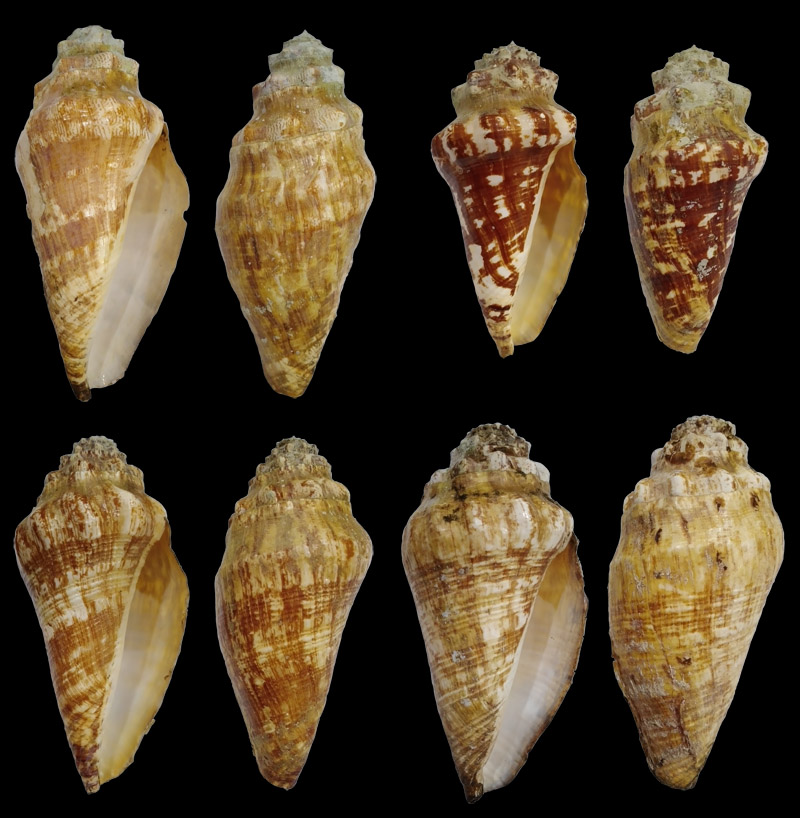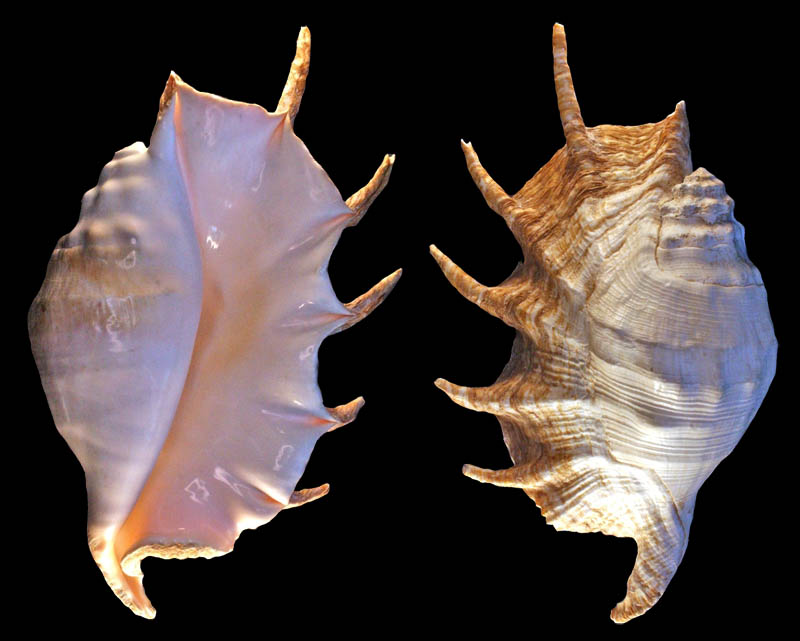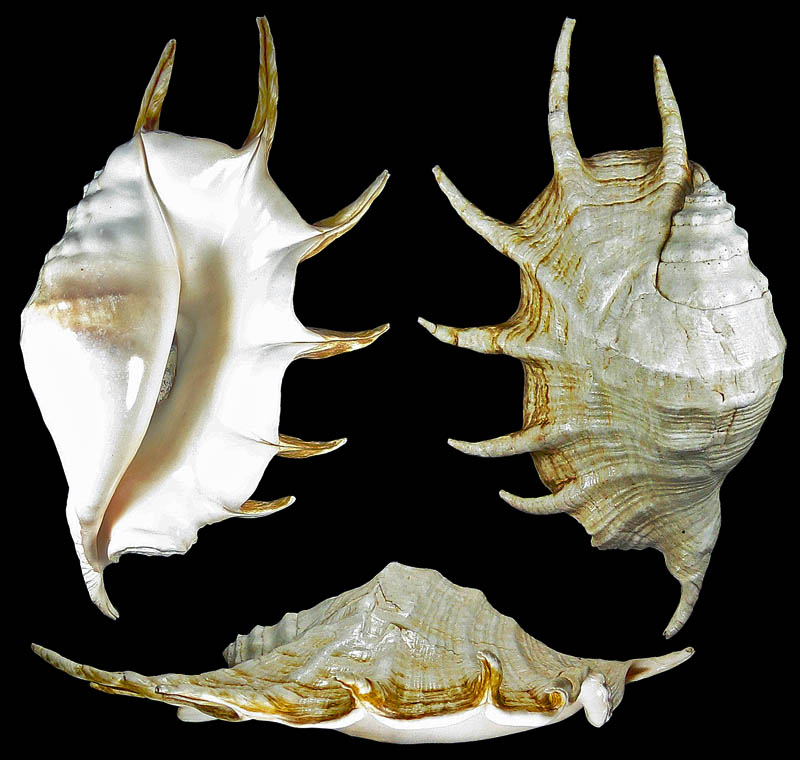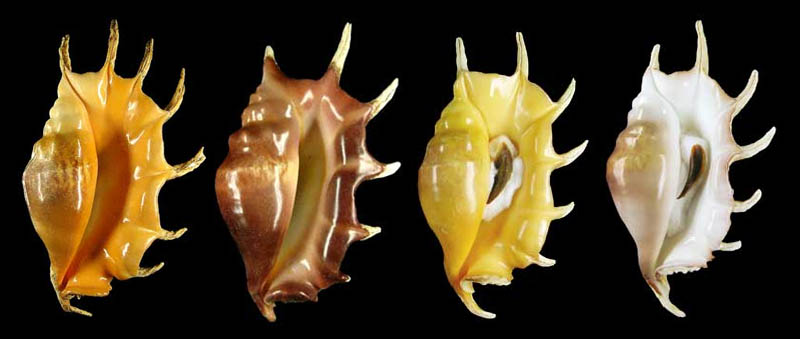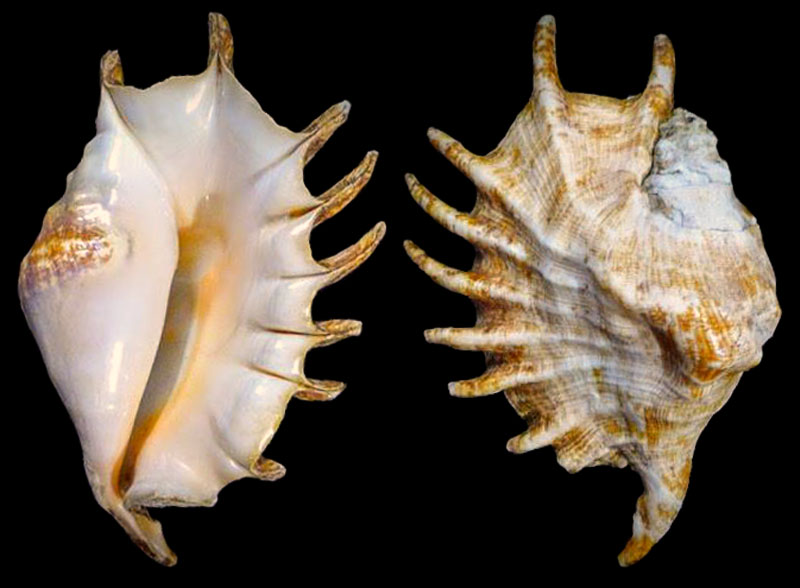Stromboidea
Original Description of Pterocera (Heptadactylus) sowerbyi By Mörch, 1872, p. 131:
- "Differt a sequente specie testa crassiore, spira multo longiore, fere tertiam partem longitudinis aequante; spinis brevioribus; labro intus in angulo postico lirato (liris 6-8), lobo labrali postico crassissimo, intus lirato (liris 7-9) validioribus. Color aperturae et labri fuscus.
Locus typicus: "hab. Ins. Taiti dicta"
Mörch gave no drawing.
History and Synonymy
Lambis sowerbyi Mörch, 1872: 3520 (Pterocera (Heptadactylus)) [Taïti]
- Syn.: Pterocera bryonia Reeve, 1851: pl. 1 [Society Islands]
- Syn.: Pterocera (Heptadactylus) sowerbyi Mörch, 1872: 131.
1766
Cornuta decumana in Rumphius, 1766, pl. XXXV, fig. H
1842
Pteroceras truncatum Sowerby, 1842, pl. 11, fig. 13
1851
Pterocera bryonia Reeve, 1851, Pterocera, pl. 1, fig. 1
Reports
Jeanette and Scott Johnson on Lambis truncata from Kwajalein Atoll:
- "Lambis truncata is distributed across much of the Indo-West Pacific, but is often split into two separate subspecies. Lambis truncata truncata is found in the Indian Ocean, while Lambis truncata sebae (Kiener, 1843) is the form found in the Pacific. It is the largest of the finger shells and is very common in the Marshalls in a variety of habitats. They can be seen in good numbers in lagoon sand and Halimeda algae flats; on rubble and the hard reef flat as shallow a meter of less; on lagoon pinnacles, particularly the large and flat-topped ones; and on both eastern and western seaward slopes, both on the top of the slope and down the sides. Fish & Wildlife, who came to Kwajalein at the request of the US Army to survey the marine environment surrounding islands it leases, chose to recommend this and Harpago chiragra be made protected species. (Although they originally misidentified H. chiragra as L. scorpius.) Curiously, the reason for recommending the protected status was basically that...they were there. That is, specimens were present off the leased islands where they did their sampling, so therefore the shells might get collected. Hmm, you could do a lot with that kind of reasoning. (Tuna are in the waters around Kwajalein and they might get caught, so perhaps they need to be protected as well.) In any case, the recommendations were accepted and these are now protected from sport scuba divers and snorkelers who work as contractors on the Army base. However, the species can hardly be said to be threatened, especially from sport divers, who I'm sure only very rarely ever picked up a specimen as a souvenir. If there is a threat to this species, and I don't really think there is, it is because the local islanders collect them for food. I have seen piles of broken shells collected by Marshallese fishermen in one day that contained more shells than, I'm sure, all the specimens collected by sport divers on Kwaj over a span of years. Yet the local Army regs do not and cannot regulate Marshallese fishermen. I'm not saying it is a good idea to collect them, or that it is a bad idea to discourage collecting them; however, this particular regulation does nothing to add to their protection. Expending effort to protect species that do not really need it dilutes the importance of protecting species that really can use it, such as the giant clam Tridacna gigas. Those are too scarce and their numbers have declined. Unfortunately, the greatest threat to Tridacna is also fishermen harvesting the animals to eat, and there is not much that can be done about that."
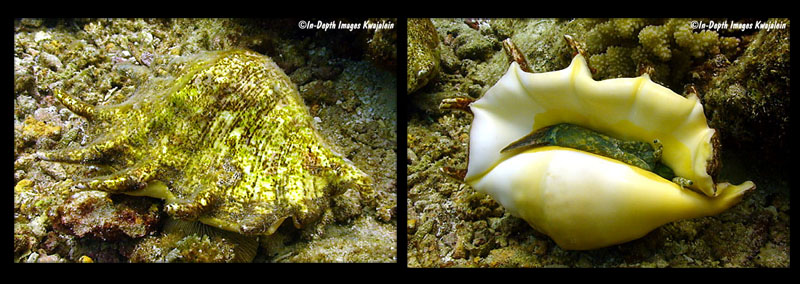
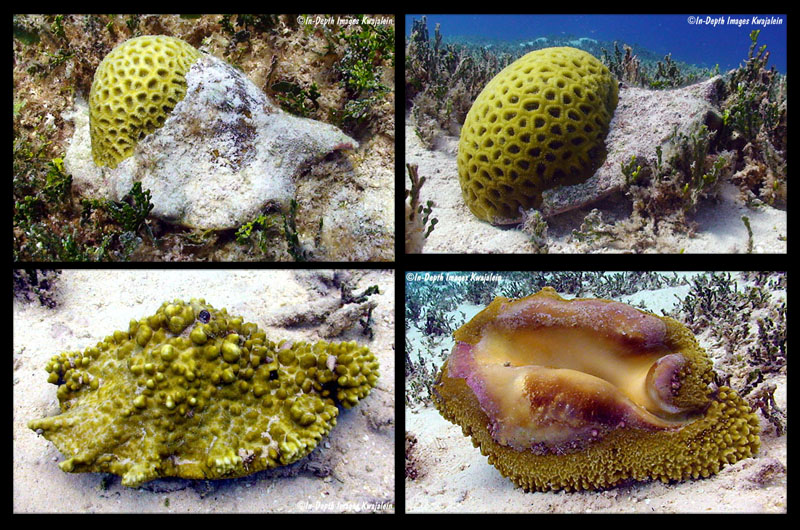
- top left: "Most specimens are old with worn-off fingers and heavily encrusted with dorsal calcium deposits, up to and including colonies of various corals, such as the faviid coral growing on the shell."
- top: "Here's a real head scratcher. The specimen on the right was observed in the same area as the one on the left. The photo above was taken on 24 September 2009, while the one on the right was shot on 1 June 2010. Could the coral carried by that overburdened mollusk possibly have grown that much in a mere nine months? Or did the one on the left simply move out of the area and the one the left move in? I wish I'd marked it somehow! It seems the large size of Lambis truncata shells makes for a good settling site for coral larvae, particularly in the soft sandy or algae habitats these shells frequent."
- bottom: "This one's shell is completely encrusted with Millepora fire coral, with the fire coral even encroaching into the living space of the molluscan occupant. I felt sorry for this guy. It must have been painful to extend his eye stalks out through the anterior notch with all that stinging fire coral around. I wished I'd been carrying a chipping hammer to try to chip some of the coral away."
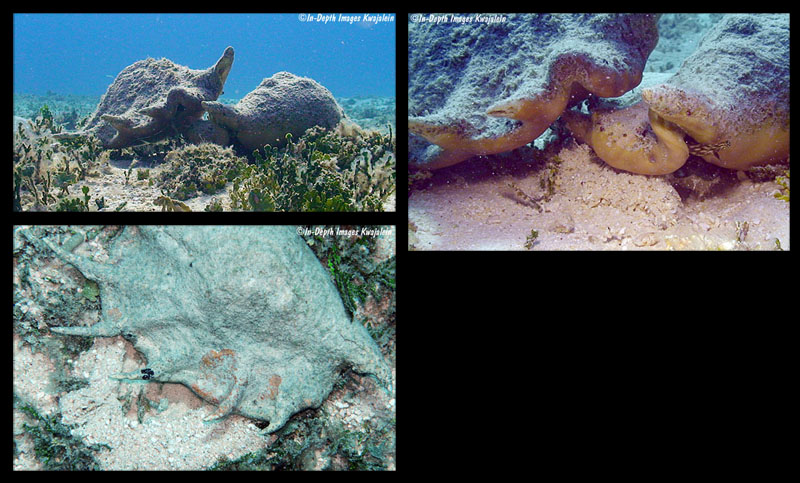
- top: "This pair in a Halimeda patch are putting down an egg mass, seen as a mass of mucus packed sand just below the shell in the second photo on the right. We have seen in particular Lambis truncata with individuals right together when spawning, but that species and several others are nearly always found in pairs or trios and they are often right together when not spawning."
- bottom: "Here's another egg mass just below the shell in the photo."
- top left: "Despite their large size and thick shells, they do fall prey to some creatures. This shell was on a midlagoon pinnacle, far from anyplace where people could have likely broken the shell in order to eat the animal."
- top right: "The stalked eyes peek out of the shell's aperture. Looks a bit cross-eyed."
- bottom: "Here's a group on a Kwajalein lagoon pinnacle. Some of these large flat-topped pinnacles are the best places to see a lot of specimens in a small area."
"Lambis truncata often provides a surface for settling coral larvae. I wonder how large one of these corals has to get before it prevents the poor snail from moving. I also wonder how many coralheads started off with a nucleus consisting of one of these shells."
- middle right: "More fire coral Millepora with a little chunk of Porites."
All Photos of Kwajalein Atoll-specimens courtesy Scott & Jeanette Johnson, Kwajalein Atoll
Bob Abela about Lambis truncata sowerbyi from Guam
Lambis truncata sowerbyi Mörch, 1872; ~55 ft; exposed on the reef; Hospital Point, Guam; 02 September 2007; photo Bob Abela
Specimens from private collections
Lambis truncata sowerbyi (Mörch, 1872); Coll. Virgilio Liverani
- up left: Philippines Islands, 260 mm.; up right: Philippines Islands, apex
- down left: New Caledonia, Melanesia, apex; down right: Queensland State, north east Australia, apex
Lambis sowerbyi (Mörch, 1872); Palawan Island, Palawan Province, Mimaropa Region, Philippines; Coll. Ulrich Wieneke
Lambis truncata sowerbyi (Mörch, 1872); Balabac island , south Palawan Island, Palawan Province, Mimaropa Region, Philippines; taken in 15 m; 240 mm; Coll. Jean-Pierre Barbier
Lambis cf. sowerbyi (Mörch, 1872); local fisherman in near Kepulauan Seribu, Indonesia; 304 mm; Coll. Anthony Suhandi
- Comment: Very heavy and very wide flared lip.
Lambis sowerbyi (Mörch, 1872) juvenile; Bungin Island, Sumbawa, Indonesia; Coll. Anthony Suhandi
Lambis truncata sowerbyi (Mörch, 1872); off East end of Neye Island, Guam Island, Mariana Islands, Micronesia, USA, North Pacific Ocean; 10/1979; on reef in moss, 25 feet, Scuba; 300,0 mm; coll. Richard Salisbury
Lambis truncata sowerbyi (Mörch, 1872); Piti Lagoon, Piti Bomb Holes, Guam Island, Mariana Islands, Micronesia, USA, North Pacific Ocean; 20-25 ft on sand, snorkeling; 339 mm; 1985; coll. Paul Merrill
Lambis truncata ; colour variations; Philippines Islands; Coll. Guido Poppe
Lambis truncata sowerbyi (Mörch, 1872); freak; Vietnam; Coll. Dieu Cu
References
- Mörch, O.A.L., 1872. Descriptions d'espèces nouvelles. J. de Conch., 20:129-133.

